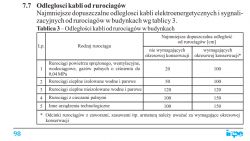Hello
I am laying electrical installation in a newly purchased apartment, old building 1930. Walls made of suprema + boards. In one room, it suits me to lay the electric wires in a conduit, and the central heating pipes go next to it in the same groove and I want to insulate them with red foam and then pour the entire set with assembly foam. I don't know the temperature in the pipes, but something around 50 or 70 degrees, gas heating system. My question is will these pipes with such water not harm these electrical wires? The second question is whether to put wires in conduits in suprem or can you do without?
I am laying electrical installation in a newly purchased apartment, old building 1930. Walls made of suprema + boards. In one room, it suits me to lay the electric wires in a conduit, and the central heating pipes go next to it in the same groove and I want to insulate them with red foam and then pour the entire set with assembly foam. I don't know the temperature in the pipes, but something around 50 or 70 degrees, gas heating system. My question is will these pipes with such water not harm these electrical wires? The second question is whether to put wires in conduits in suprem or can you do without?



